Artillery / Surface to surface missiles / S-2 Sopka
S-2 Sopka
General Facts
- TYPE
Coastal defense system - ORIGIN
 USSR
USSR - NICKNAMES
SS-C-2a Salish (NATO designation for fixed site variant)
SS-C-2b Samlet (NATO designation for mobile variant)
4K87 (GRAU designation) - DESIGNED
1955 - 1958 - DESIGNER
OKB-155 - PRODUCTION
1958 - 1960's - PRODUCERS
 USSR
USSR - QUANTITY
At least 100 launcher and 500 missiles produced. Production complete. - UNIT COST
Unknown - CHARACTERISTICS
 Powerful high explosive warhead
Powerful high explosive warhead
 Dual mode seeker in upgraded S-2 missiles
Dual mode seeker in upgraded S-2 missiles
 Mobile system with some off road ability
Mobile system with some off road ability
 Vulnerable to interception due to size and low speed
Vulnerable to interception due to size and low speed
 High altitude flight profile increases odds of detection
High altitude flight profile increases odds of detection
 Seeker vulnerable to countermeasures and clutter
Seeker vulnerable to countermeasures and clutter
 No shoot-and-scoot ability due to long set up time
No shoot-and-scoot ability due to long set up time
 Radar sets limited engagement to 1 or 2 targets per battery
Radar sets limited engagement to 1 or 2 targets per battery
Introduction
The S-2 Sopka is an early Cold War era coastal defense system of Soviet origin. It was developed in the late 1950's. The anti-ship missile used in the S-2 Sopka system is derived from the KS-1 Komet (NATO: AS-1 Kennel) air launched anti-ship missile. Early production models were fixed site models known as Strela, Russian for Arrow, and known by NATO as the SS-C-2a Salish. The main production model is the S-2 Sopka, which is a mobile version and known by NATO as the SS-C-2b Samlet.
Layout
The S-2 Sopka is a land based coastal defense system built around the S-2 missile, a land based version of KS-1 Komet air launched anti-ship missile. The KS-1 missile was developed only a few years earlier and was in turn derived from the MiG-15 fighter jet airframe. The S-2 missile is launched from a large fixed site or trailer mounted launch rail.
Guidance
The S-2 missile uses active radar homing. Upgraded missiles added an infrared seeker alongside the radar homing system. At launch the S-2 uses a pre-planned inertial flight profile at high altitude. The flight profile can be updated mid course. In the terminal phases the S-2 uses active radar homing system, either with or without infrared augmentation.
Firepower
The S-2 Sopka system has a reported practical minimum range of 15 km and maximum range of 90 km. Maximum range depends on the selected flight profile and radar horizon. In theory the maximum range is 115 km. The S-2 missile flies at subsonic speed and carries a heavy 600 kg high explosive warhead. Test launched indicated a 70 to 80% hit rate. The dimensions, low speed and high altitude flight profile make the S-2 missile vulnerable to interception by aircraft, surface to air missiles and close in weapon systems.
Mobility
The S-2 Sopka is a mobile coastal defense system, but is not suited for shoot-and-scoot operations. Set up time is at least 30 minutes, and probably much longer in practice. All components of the S-2 Sopka are towed KrAZ-214 and ZIL-157 tactical trucks. The earlier Strela system uses fixed site launchers and is not considered mobile.
Users
The S-2 Sopka was initially adopted by the USSR in the late 1950's and was widely exported to Soviet allies in the early 1960's. The S-2 Sopka was transfered to Cuba alongside the similar looking FKR-1 tactical missile during the Cuban missile crisis. The S-2 Sopka was used operationally during the 1973 Yom Kippur war by Egyptian forces. The S-2 Sopka was supplemented by the more capable 4K44 Redut (NATO: SS-C-1 Sepal) and later by the more mobile 4K571Rubezh (NATO SS-C-3 Styx).
S-2 Sopka coastal defense system
The S-2 Sopka coastal defense system is based around the S-2 missile and consists various components.
Strela: Early production model, developed as fixed site system. Introduced in 1957, but tested as early as 1956. Tests indicated that it was easy to develop a mobile trailer mounted version of this system. The fixed site model was not exported.
S-2 Sopka: Standard production model with trailer mounted launch rails and radar systems. Introduced in 1958.
A typical S-2 Sopka battery consists of the following components:
4x B-163 trailer mounted launch rails. The trailer has two axles with double wheels, two jacks and two outriggers. The launch rail holds a single S-2 missile and can be rotated -85 to +85 degrees.
8x PR-15 single axle trailers used to transport and reload S-2 missiles.
1x Mys, Russian for Cape trailer mounted target detection radar.
1 or 2x Burun trailer mounted target ranging radar.
1 or 2x S-1M trailer mounted fire control radar.
- Specifications:
- S-2
| Type | Anti-ship missile |
|---|---|
| Diameter | 1.2 m body, 4.8 m wingspan |
| Length | 8.3 m |
| Weight | 3.419 kg at launch |
| Guidance | Inertial first phase with mid course corrections Semi-active radar homing Infrared seeker with 10 km daytime range and 5 km at night |
|---|---|
| Warhead | 600 kg HE |
| Propulsion | RD-500K turbojet engine, solid propellant booster rocekt |
| Speed | 1.050 km/h max |
| Range | 15 km (practical minimum), 95 km (practical maximum), 115 km (theoretical maximum) |
|---|---|
| Altitude | - |
| Engagement envelope | - |
| Remarks | 400 to 1.200 m flight altitude, no low level flight in terminal phase |

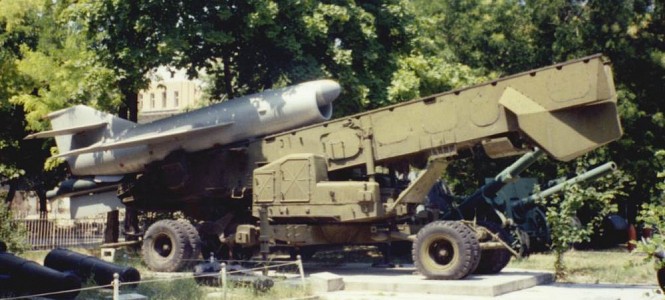
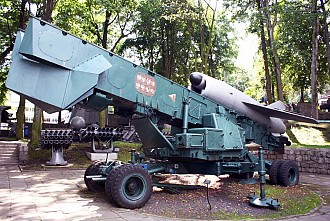
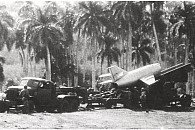
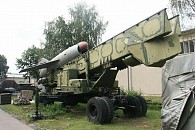
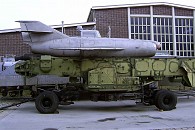
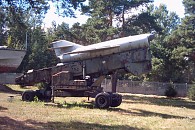

/--/img/ws/ar_tac_4k44_o1.jpg)

/--/img/ws/ar_tac_4k51_o1.jpg)